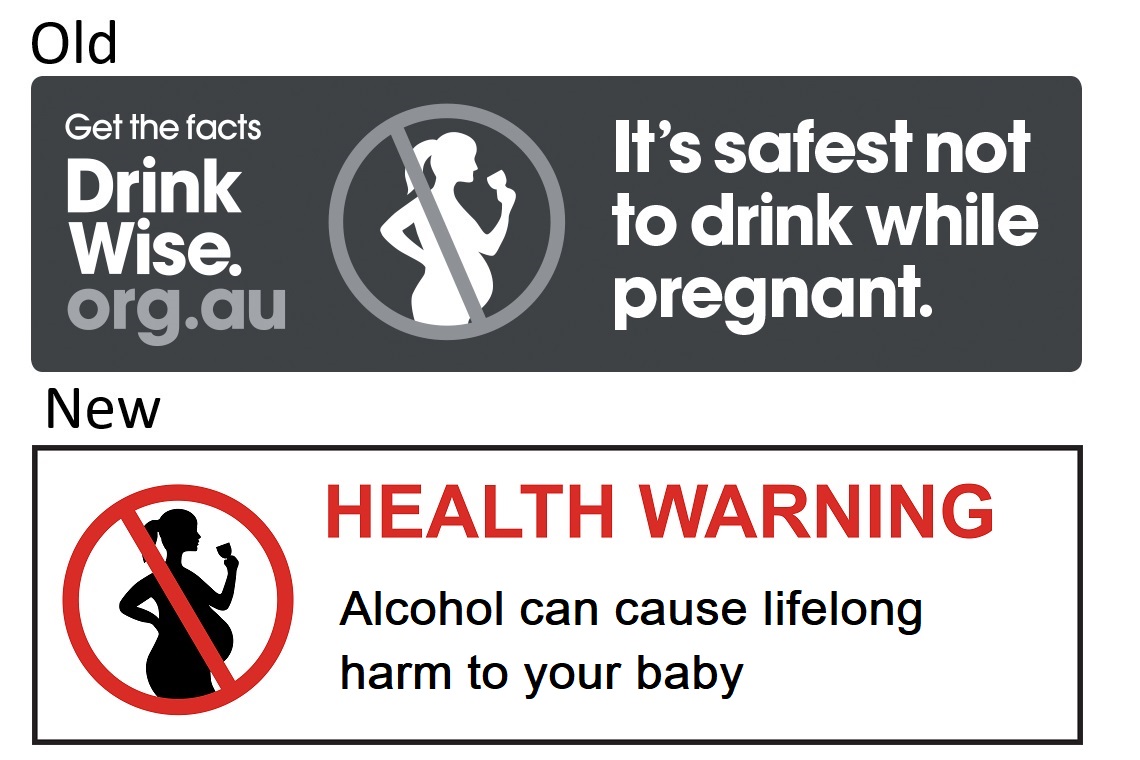While Australia’s beer, wine and spirits producers support the mandating of pregnancy warning labels on products there remain concerns regarding the cost of adding colour the existing labels.
The vast majority of Australia’s alcohol products carry the familiar pictogram of a pregnant woman holding a glass with a line through her silhouette. This is set to be mandated and updated with a new message that ‘alcohol can cause lifelong harm to your baby’, but it is mandating colours on the label that has producers concerned, as Andrew Wilsmore the Chief Executive Officer of Alcohol Beverages Australia (ABA) explained.
“Mandating colours, instead of the existing contrast requirements established under the Food Code, would impose the biggest cost on consumers, without any scientific basis, for no measurable benefit,” Wilsmore said.
“This would cost consumers an extra $400 million*, with ongoing high costs due to the more expensive label printing costs. At our industry’s average yearly earnings, this regulatory burden would be the equivalent of close to 6,500 jobs that could otherwise have been created.
“Our voluntary labelling initiative presently covers three out of every four items in a liquor shopper’s basket. By mandating warnings we will ensure that every bottle of wine, beer and spirits carries an important message, supported by industry, to raise awareness of the harms of drinking while pregnant or trying to conceive.”
Wilsmore added that the industry is disappointed that it has taken so long to get to the point of mandating the pregnancy warning labels.
“Food Forum Ministers agreed ‘that a mandatory labelling standard for pregnancy warning labels on packaged alcoholic beverages should be developed and should include a pictogram and relevant warning statement’ at their meeting on 11 October 2018,” he said.
“What should have been a simple exercise was made infinitely more complicated when bureaucrats at FRSC (Food Regulation Standing Committee) and FSANZ (Food Standards Australia New Zealand) continued to put forward a proposed design that was not in keeping with the clear direction given to them by Governments.
“In March 2020, common sense prevailed and Food Forum Ministers – federal, state and territory – sent the bureaucrats back to the drawing board after rejecting a proposal that mandated colours and a non-relevant signal word.
“Despite the clear direction given by Food Forum Ministers to ditch the colour version, the bureaucrats just can’t let go of their pet design and it is back again.”
Wilsmore added: “It is extremely concerning that FRSC and FSANZ bureaucrats have totally ignored Ministers’ direction and submissions made to them which outlined where their proposal incurred substantial and ongoing costs.
“Fortunately Ministers can now insist on the common sense design they and producers supported in March by amending the mandated colour to be in line with Food Code requirements for legibility and contrast, and will be cost-effective to implement.”
Despite the concerns over costs and disappointment over the time this has taken, Wilsmore said that Australia’s producers are still keen to work with Governments on sensible outcomes that will help raise awareness of FASD and that will be cost-effective for both small businesses and Australians enjoying a responsible drink.

